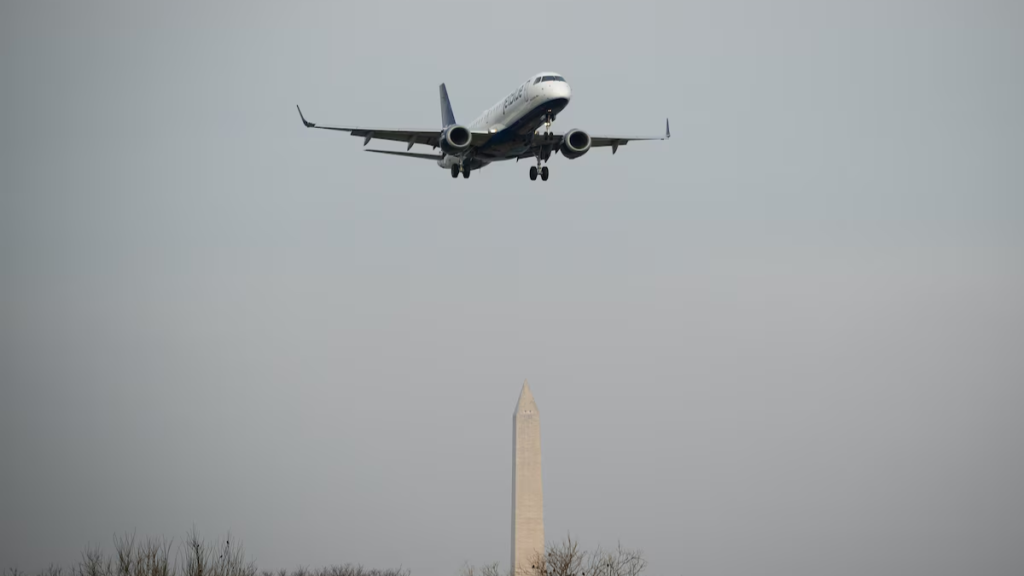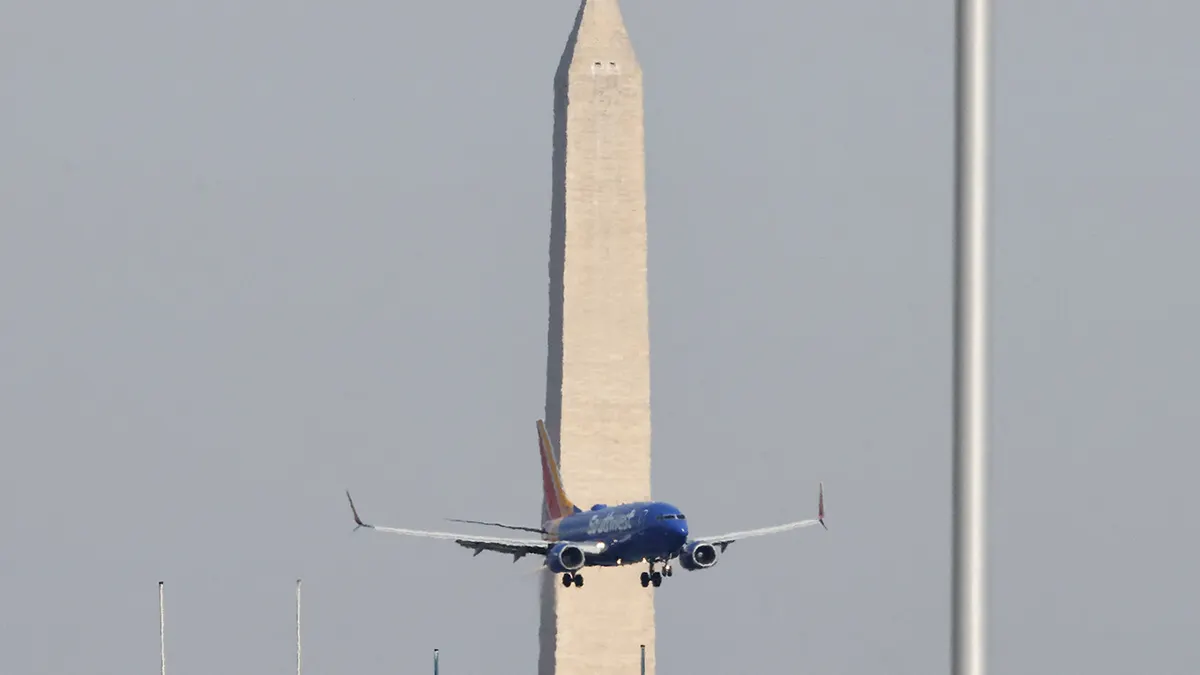On Thursday, May 1, 2025, a startling aviation incident unfolded over the skies of the nation’s capital, when two commercial airliners were forced to abort their landing at Ronald Reagan Washington National Airport (DCA).
The emergency go-arounds were prompted by a U.S. Army Black Hawk helicopter that had reportedly deviated from its approved flight path while en route to the Pentagon. The deviation created a near-miss scenario, pushing air traffic controllers to swiftly direct the incoming planes away from a potential collision.
This incident, currently under joint investigation by the Federal Aviation Administration (FAA) and the National Transportation Safety Board (NTSB), has raised serious concerns regarding the integration of military aircraft operations within high-density civilian airspace.
With Reagan National Airport being in close proximity to the Pentagon and other critical government buildings, the need for precise air traffic coordination is of paramount importance.
Details of the Near Miss
At approximately 2:30 p.m. Eastern Daylight Time, Delta Air Lines Flight 1671 from Orlando and Republic Airways Flight 5825 from Boston were on final approach to DCA when air traffic controllers detected a dangerously close approach with a military helicopter.
The Black Hawk, which was on a flight path toward the Pentagon, instead took an unapproved and uncoordinated route referred to by military personnel as a “scenic route.”
Radar data and preliminary FAA reports indicated the proximity between the helicopter and one of the commercial jets reached just 0.4 miles horizontally and a mere 200 feet vertically—well below the required separation standards for safe aircraft operations.
This triggered an immediate alert, and both commercial aircraft were ordered to perform go-arounds.
Go-arounds are emergency flight procedures that reroute a landing aircraft back into a holding pattern or toward another runway to avoid mid-air conflicts. While standard and routinely practiced by pilots, they are rare in real-time operations, especially when caused by uncoordinated military movements.
Repeat Concerns Over Military Operations
This isn’t the first time that this specific Army aviation unit has come under scrutiny. Just three months prior, a tragic mid-air collision involving another Black Hawk helicopter from the same brigade occurred over the Potomac River.
That incident resulted in 67 fatalities and prompted the FAA to initiate a comprehensive safety review of military operations near commercial airports.
U.S. Transportation Secretary Sean Duffy addressed the press after the incident, stating, “This is a completely avoidable situation that endangered lives. We must hold all agencies to the same safety standards, regardless of military status.”
Duffy has since promised to engage in further dialogue with the Department of Defense to establish more stringent safety protocols for military flights near civilian airspace.
FAA and NTSB Investigations
The FAA and NTSB are currently analyzing air traffic control recordings, radar logs, and communications between the helicopter crew and the DCA tower. Investigators are also reviewing why the Black Hawk was permitted into such close airspace and whether proper flight plans had been filed or followed.
The FAA confirmed that the helicopter was classified as a Priority Air Transport (PAT) flight, which sometimes allows military aircraft to bypass standard airspace restrictions for time-sensitive missions. However, such privileges are contingent upon prior coordination with civilian air traffic control, which did not occur in this instance.
This incident, as well as previous ones involving military-civilian airspace conflicts, is being reviewed under the FAA’s broader air safety modernization initiative. More than 85 near-miss events involving helicopters and commercial planes have been documented in U.S. airspace since 2021, highlighting an urgent need for improved operational oversight.

Political and Public Response
Members of Congress, including Senate Commerce Committee leaders Maria Cantwell (D-WA) and Ted Cruz (R-TX), have voiced bipartisan concern about these recurring issues. “Air safety must never be compromised, no matter who is flying the aircraft,” said Cantwell during a briefing.
Cruz echoed this sentiment, urging for enhanced pilot training and increased investment in advanced radar systems capable of more precise aircraft tracking.
Passengers aboard the diverted flights reported minimal disruption, although several noted the abrupt climb and reroute led to anxiety and confusion. Delta and Republic Airways both released statements affirming that safety was maintained at all times and that their pilots followed all instructions from air traffic control.
Broader Implications for Air Traffic Control
The situation has sparked wider debate over the challenges of operating complex airspace in metropolitan areas like Washington, D.C., where commercial, private, and military aircraft often operate in close quarters.
Industry groups like Airlines for America have renewed calls to limit non-essential helicopter traffic over major airports, particularly during peak flight schedules. The FAA has responded by implementing temporary airspace closures and route restrictions for military aircraft approaching sensitive zones like the Pentagon.
Experts believe that incidents like this reinforce the need for enhanced real-time communication protocols and automated deconfliction technologies that can help prevent close calls.
Conclusion
The dual go-arounds performed by two commercial jets at Reagan National Airport serve as a wake-up call for the aviation sector. As the FAA and NTSB conduct a thorough investigation, the aviation community must work together to ensure such events remain rare.
Improved communication, updated flight technologies, and stricter adherence to coordination protocols between military and civilian authorities will be essential moving forward.
For official updates and regulatory details, visit the Federal Aviation Administration.
Disclaimer – Our team has carefully fact-checked this article to make sure it’s accurate and free from any misinformation. We’re dedicated to keeping our content honest and reliable for our readers.
